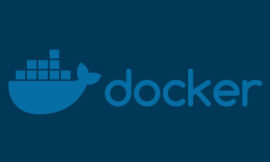Commentary: Cloud was supposed to kill open source, but it seems to be doing the opposite.

Image: GettyImages/PhonlamaiPhoto
It turns out there’s a lot of money in giving away free software. We spent years pedantically explaining that free/open source was about “free as in speech, not as in beer.” We worried there might never be another billion-dollar open source company besides Red Hat. We fought over business models and wondered if open source is sustainable. While we were doing these things, open source kept getting bigger and more profitable.
How? Through the very thing we thought would kill open source: cloud.
What a week in open source and cloud news
Cloud shows up in all the major open source news of the past week. For example, Confluent, the primary corporate sponsor of Apache Kafka, filed to go public. The company more than doubled its customer count (to 2,500) over the past year, generating more than $236 million in revenue. Revealingly, that revenue has grown in tandem with cloud adoption: More than half Confluent’s revenue now derives from its cloud offering just three years after launching Confluent Cloud.
SEE: Cheat sheet: The most important cloud advances of the decade (free PDF) (TechRepublic)
Meanwhile, MongoDB, the company behind the eponymous data platform, announced earnings. Though the company has moved on from an open source license, customers keep lining up. MongoDB generated over $181 million in revenue last quarter, putting it on a $723 million run rate. Perhaps most importantly, 51% of that revenue came from Atlas, its database-as-a-service cloud offering, just five years after Atlas was introduced.
With Confluent going public and MongoDB staying public, Cloudera opted to move in the other direction. In a $5.3 billion deal, Clayton, Dubilier & Rice (CD&R) and KKR announced a deal to take Cloudera private. Cloudera’s annualized recurring revenue topped $778 million, as per its most recent earnings call, but private equity buyouts tend to happen because someone sees an opportunity to fix things. Cloudera is a great business, and has employed many of the committers to projects like Apache Hadoop and Apache Hudi over the years. But Cloudera, ironically, seems to have struggled to embrace…cloud. Going private arguably gives the company more space to retool and accelerate its Cloudera Data Platform (CDP), which now has 15% of its customer base, up from 10% the quarter before.
There’s a theme here, in case you missed it: open source and cloud go well together. Actually, I’d go one step further. As I’ve written, cloud “enabled the Cambrian explosion of innovation in open source over the decade.” This is incredibly interesting, because cloud was supposed to cripple open source.
More to come
This is not to say there’s no more drama between cloud and open source–at least, not at the corporate level. But that drama diminishes in concert with open source companies figuring out how to operationalize that code with cloud services. Interestingly, that “figuring out” is happening in partnership with the very clouds that once seemed so threatening.
In MongoDB’s latest earnings call, for example, CEO Dev Ittycheria talked about how against-the-grain MongoDB’s cloud decision was when it launched:
We launched Atlas in June of 2016 as a self-serve-only offering on AWS. Although in retrospect, the decision to launch an independent Database-as-a-Service business seemed like a no-brainer, it wasn’t obvious at the time. There was a fair amount of skepticism in the market that an independent company could build a successful cloud service while both partnering and competing with the hyperscale cloud vendors.
That skepticism persists in some quarters but, according to Ittycheria, MongoDB’s success isn’t a solo affair: “We are seeing increasing opportunities to expand ways we partner with cloud providers through both technical integrations as well as go-to-market initiatives to enable more customers around the world to derive the benefits of using MongoDB.”
SEE: 5 programming languages cloud engineers should learn (free PDF) (TechRepublic)
Confluent, for its part, in its S-1 noted, “We currently offer Confluent Cloud on the public clouds… [that] are also some of our primary actual and potential competitors.” But the company further suggested that partnerships with the cloud vendors are “central to our sales and marketing strategy. We believe through these partnerships we will significantly expand the reach of our technology.”
In short, we seem to be leaving the awkward teenage phase of cloud’s interaction with open source. Open source companies are figuring out that cloud services are their fastest path to serious monetization, and building those services is best in partnership with the cloud vendors. I spent years working for open source startups, and our top concern was always “How do we convince someone to pay for software they can download for free?” It turns out that customers would rather build customer-facing applications than futz with the underlying infrastructure. By operationalizing otherwise free software, open source companies are finding it easier to convince customers to pay.
One key to open source sustainability, in other words, might be more cloud.
Disclosure: I work for AWS, but the views expressed herein are mine.
Also see
Source of Article



